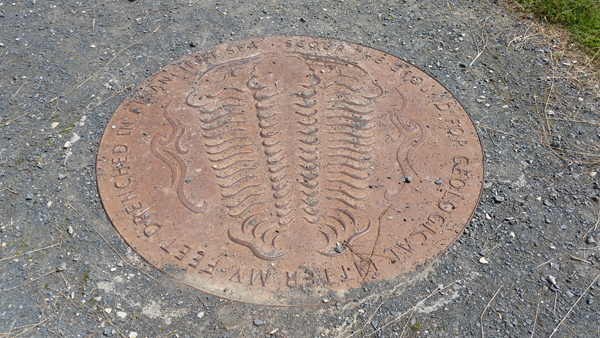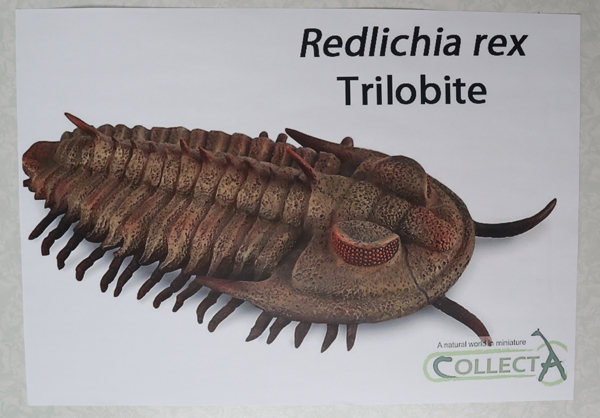In 2015, Everything Dinosaur team members visited Wren’s Nest. This is a nature reserve and SSSI (Special Site of Scientific Interest). The exposed strata dates from the Silurian and it is full of fossils including the occasional trilobite. Whilst exploring this location, a photograph was taken of a trilobite tribute. A plaque honouring the “Dudley bug” (Calymene blumenbachii).

Picture credit: Everything Dinosaur
Remembering the Trilobite
The Trilobita were remarkably abundant and diverse during the Palaeozoic. These ancient marine arthropods originated in the Cambrian. The last of their kind are believed to have become extinct at the end of the Permian.
The abundant fossils to be found at the Wren’s Nest nature reserve represent life on a Silurian reef approximately 420 million years ago. Team members have visited Wren’s Nest several times. This location was designated Britain’s first National Nature Reserve for geology (1956).
The motif is an inscription it reads:
“Scour the ground for geological litter my feet drenched in an ancient sea.”

Picture credit: Everything Dinosaur
The picture (above) shows a CollectA trilobite model.
To view the range of CollectA not-to-scale replicas and figures: CollectA Prehistoric Life Models.
Wren’s Nest Nature Reserve
Over 700 different types of fossil are known from Wren’s Nest. Over eighty are unique to this location and found nowhere else on the planet.
A spokesperson from Everything Dinosaur commented:
“Wren’s Nest is a geological gem. We recommend a visit, especially in the early summer months prior to the school holidays. In the height of summer this location can get extremely busy and there is limited nearby parking”
Visit the award-winning Everything Dinosaur website: Everything Dinosaur.






Leave A Comment